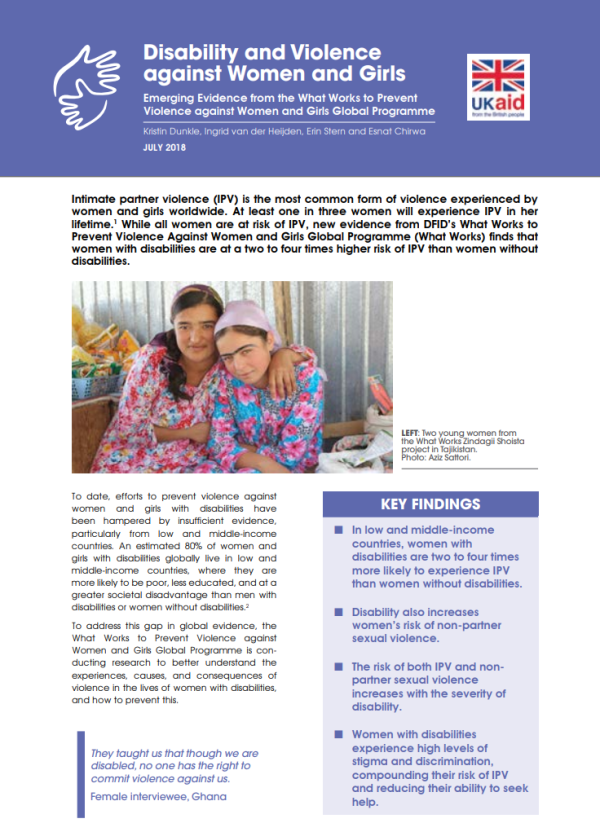This resource examines the intersections of disability, gender and violence. It summarises early evidence on intimate partner violence (IPV) from the global What Works Violence against Women and Girls Programme (the ‘What Works’ programme), which was funded by the UK Government’s Foreign, Commonwealth and Development Office (FCDO). It sets out a number of key findings, including:
- in low and middle-income countries, women with disabilities are two to four times more likely to experience IPV than women without disabilities
- disability increases women’s risk of non-partner sexual violence
- the risk of both IPV and non-partner sexual violence increases with the severity of disability
The resource sets out a number of recommendations and lessons learned from practice to ensure the meaningful inclusion of women with disabilities in violence against women and girls (VAWG) policy and programming.
Date of publication
Population
Type of resource
Funding
Length
Geographical focus
Language

